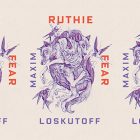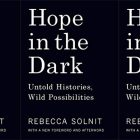The Reimagined Tales of Where the Wild Ladies Are

Reimaginings of folktales and myths have been popular across all forms of media lately. Most often, these stories are updated to make them resonate with contemporary viewers and readers; frequently, as in the case of more morbid tales like those of the Brothers Grimm or even Hans Christian Anderson, they’re sanitized to give consumers a happy ending. When large media corporations play with source material to make them more appealing to a general audience, however, these stories lose their bite. Whatever lessons were intended for the listener or reader of these tales are swept aside in favor of a clean ending, and the warm feelings that result. Not all rewritings, though, fall into this cash-grab trap—there are a number of writers who have successfully reimagined classic tales to shift perspectives and highlight modern concerns, demonstrating how overhauling an old story can be more than an aesthetic exercise—the outcome can guide readers to question the underpinnings of some of our oldest stories and how these stories relate to our current world.
Matsuda Aoko’s 2016 short story collection, Where the Wild Ladies Are (published in translation from the original Japanese by Polly Barton last month), draws from a number of traditional Japanese folktales, but is set in a decidedly contemporary setting. Most of the stories that Matsuda draws inspiration from were originally folktales or yokai tales (stories of supernatural creatures or entities) that were turned into kabuki and rakugo performances. As such, these tales already existed as reimaginings before they became the jumping-off point for Where the Wild Ladies Are. And Matsuda’s approach to her source material goes beyond a direct transfer of the narrative into a modern setting: she makes use of these tales in various ways to show how people use these types of stories to make sense of our experiences in the world.
The first story in the collection, “Smartening Up,” is inspired by kabuki play The Maid of Dōjō Temple, the story of a woman, Kiyohime, spurned by her object of desire; her love eventually turns to hatred, transforming her into a snake whose spirit reappears later in the tale in the guise of a young woman, Hanako, who returns to the titular temple. Within the world of “Smartening Up,” the play is referred to directly as a play, with the protagonist remembering the image of the actor playing Kiyohime dancing, her stunning costumes swirling on stage during the scene in which Kiyohime’s wrath is unleashed. Kiyohime’s anger and her transformation into a supernatural entity lead the protagonist to reflect on her response to heartbreak and how she can unleash her own special power into the world, rather than falling into passivity or obsessing over the breakup. As opposed to directly recreating The Maid of Dōjō Temple with contemporary characters, Matsuda uses the play as an inspirational story for the protagonist to reach self-realization within the world of the story, thereby organically situating themes from the original source material into a contemporary setting.
While a number of the stories in her collection draw on images or themes from their original sources, infusing them within their narrative, Matsuda also offers a metacommentary on the impact such layered stories can have on the world. Her story “Enoki” is based on the rakugo play The Breast Tree, but uses the way people react to the play as the starting point for the short story, humorously told from the point of view of a tree that is similar to the one in the rakugo play. The titular tree finds itself suddenly the focus of attention of people who come to her in droves, believing that the resin oozing from burrs on her trunk has special properties. The narrative tracks Enoki’s musings on humans’ desire to affix meaning and power onto things outside of their influence out of a desire to ultimately be able to control the things they can’t. They imbue Enoki, for instance, with resin that is supernaturally powerful, while the tree herself understands her resin is just resin. But the bewildered tree is also surprisingly humane, sympathizing with the women who come to her believing that her resin will help them produce their own breastmilk to feed their children. At one point the tree scoffs, “Allegedly, the ‘sweet dew’ that was Enoki’s resin had special properties. If mothers with trouble lactating rubbed the resin on their breasts, they would start producing milk. Give me a break!” While the tree’s hilariously snarky observations undercut the belief of those who come to her, she is still compassionate and empathetic: “And yet, the sadness those women felt—that was different. That was real.” The tree, eventually, is able to simply return to being a tree once enough time has passed and the human beings who once came to her for help have found other, modern means of solving problems they may have. By the end, “Enoki can be just a tree.” Through Enoki’s dry commentary, readers track the impact stories have on human behavior; stories can provide hope (even when based on something irrational at times), but they can also change over time and lead to new ways of seeing the world.
The other stories in Where the Wild Ladies Are span a similarly wide range of topics, and the way that Matsuda weaves in the source material is equally varied. Matsuda’s approach to reimagining these stories highlights another key aspect of her work: the ability to use the past to imagine a new future. As a child, I remember wishing that certain stories could have ended another way. I would express this desire to my mother as we popped one of my favorite movies tapes into the VHS player—that maybe this time the story would end differently. It never did. It can be difficult to imagine new endings to some of our classic stories, but Where the Wild Ladies Are shows us that we don’t have to follow the narrative outlines we are given. Like many of the characters in the collection, we are always tied to the past. Yet, we can also take our stories and change them around, utilizing their themes just to see what possible outcomes arise. Many of Matsuda’s stories, for example, switch up the gender of the protagonists, depicting a wide array of lived experiences that, often, are not highlighted in Japanese media. “Quite A Catch” is inspired by a rakugo story where a young man unexpectedly catches a skeleton on a fishing trip. The young man is later visited by a young woman, the spirit of the skeleton fished from the river, who thanks him for saving her. When the young man’s neighbor learns of what happened, he eagerly fishes for a skeleton, too, in the hopes of being visited by a lovely young woman. As rakugo plays are comedies, the original play ends with the neighbor catching the skeleton of an old warlord, rather than a beautiful woman—a fairly predictable punchline. While Matsuda keeps the basic elements of the story, however, the skeleton and the person who fishes it from the river are both women in “Quite A Catch.” Moreover, the two become devoted lovers and share a number of sweet, heartwarming moments together. By switching the genders around and crafting a love story, Matsuda makes space for a type of love that is still systematically discriminated against in Japan.
As Barton explains, “Matsuda wants systemic change, and the feats of the imagination she conjures up should not be read purely as escapist fantasy but also a kind of training in grasping towards a better world.” Like many fairytales and folktales, there is a sort of lesson within Where the Wild Ladies Are. But rather than offering a direct guide for change, the stories in the collection encourage us to change how we understand stories—whether that be the folktales we tell children or the larger national myths we hold on to as adults—and to see where we can break away from received narratives into new futures.



